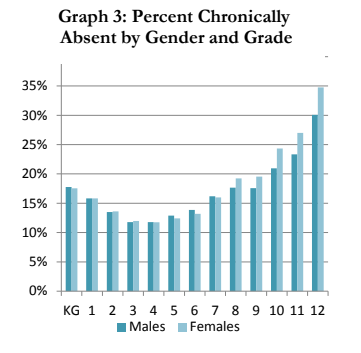Spring is in the air and so is prom season. For students at Ida B. Wells, plans are underway; outfits, reservations and appointments all need to be arranged. However, a new school policy is at the forefront of students’ minds. All juniors and seniors at IBW must have 85 percent attendance (in semester 2) by May 1 to go to prom.
This new requirement means students can miss up to nine days of school, or 36 periods. As of the past 30 school days, senior attendance rates at IBW are in the “severe” category, making decreasing absences is one of the top priorities of the IBW administrators.
“This policy was made because I am concerned about the overall attendance rates at our school. Our senior class has an attendance rate of 75 percent, which as measured by national standard is in the severe category,” said Ayesha Coning, the principal of IBW and the vice principal of the senior class. “We know that there’s a direct correlation between attending school and experiencing school success. So the intention of the policy is ultimately to help improve the attendance of individual students at Ida B. Wells… who[m] are struggling with attendance, and as a result, also struggling in school.”
Many students were upset about the creation of this policy, however, according to the IBW administration, this new policy is only meant to target students who regularly miss class. “This [policy] is not to punish kids. This is actually the opposite,” said Coning. “[It is] to uplift them and for me to understand a part of their story, what they are willing to share, and then to hold my school accountable. Are we doing everything we can to support a kid who’s not doing well in school and who’s struggling with their attendance?”
Though some people, including teachers, have different views on this policy. Abby Griffin, a leadership and English teacher at IBW said, “I don’t think it’s going to catch the kids that we’re trying to catch. In my opinion, [it will] turn people away from prom, rather than turn people towards school.”
On top of this, the policy could also affect leadership students who planned prom. “It’s pretty tough. [Students] put a lot of work into making the dances accessible, to making them fun, to responding to student feedback and making sure that we’re getting as many students from as many corners of the school as we can. We put a lot of thought into it, we put a lot of money into it. Leadership is a self-sustaining program,” said Griffin. “It’s not just the emotional impact of having a wrench thrown into your plans. I think it’s also the kind of financial impact of, ‘how are we going to lose money?’, which then impacts next year’s dances and next year’s experiences. And how are we going to move forward?”
On March 1, April 1 and May 1, the attendance rate of juniors and seniors will be measured. If a student has less than 85% attendance, they must meet with their vice principal before prom. The junior and senior vice principals will begin meeting with students with less than 85 percent attendance on March 1, prioritizing those with unexcused absences.
Regardless of whether students’ absences are excused or unexcused, they will need to meet with their grade’s vice principal due to the lack of differentiation between excused and unexcused absences in the attendance system. This means that an excused absence will still be recorded as an absence. Students with less than 85 percent attendance due to excused absences – meaning due to athletics, mental health days, appointments, or other reasons – will be able to explain their absences in this meeting. If they are excused, these students will still be allowed to attend prom. On the other hand, students with unexcused absences will work with their vice principal on a formal agreement to improve their attendance.
“The goal is also so every single senior [and junior] who wants to go to prom, goes to prom. I will feel confident helping a senior, approving a senior to go to prom who, let’s say their attendance is 60 percent, as long as [we] have sat down and we have a clear path to improve attendance and towards graduation,” said Coning. Scott Burns, the vice principal of the junior class, plans to do the same as Coning with the junior class. Yet, it’s still unclear thus far as to how this policy will be enforced when a student is still ineligible to go to prom on May 1. It appears that the administration will work to connect with students until this date, so they can attend.

Historically in Oregon, the grades with the lowest attendance rates are kindergarten and senior years. Still, the administration wants to create an avenue to connect with struggling seniors to work toward improving their attendance. “This policy is coming from a place of just caring for how kids are doing because we all know how important coming to school is, learning, eventually passing grades and getting a diploma,” said Burns. “It may not sound [like] that at first, [but] this is truly coming from a place of what can we do to support students and care [of them] and have an expectation that they attend school?”
According to some students, trying to combat this trend might be difficult and shouldn’t impact such an important part of their high school experience. Many think absences shouldn’t matter, so long as they are on track to pass their classes and graduate. This policy has heightened concerns for juniors and seniors and hasn’t been received well.
“I’m already pretty sure that I’m not going to prom, which is pretty disappointing given that it’s pretty much the social event of this entire year,” said Cedar Tatarek, a senior at IBW. “I know a lot of my friends have bought dresses already, which is already a waste of money. So it feels like I have to come to school, even if I’m sick or I just do not have the capacity to go.”
Tatarek also spoke about how the policy affects some students. “I feel like this affects certain students more than others, in that, LGBTQ students are going to miss more days because they usually have more mental health crises. Black students have lower attendance nationally than white students, which means we’re excluding our already very small POC population. Women have periods and have 70% of all autoimmune diseases. There’s just so many reasons that [this policy] affects marginalized groups, so it’s like, is it worth it?”
IBW administrators are aiming to avoid this. “I don’t want there to be a disproportionate number of, let’s say, students who have mental health concerns who struggle with coming to school not going to prom. I don’t want a disproportionate percentage of students of color, because their attendance rates, may generally speaking, be a little lower, not going to prom. That’s not going to happen,” said Coning.
Along with students, many teachers at IBW are also concerned about the policy’s impact on students. “While I’m not opposed to there being a policy in place that encourages students to come to school…I am opposed to how the policy was rolled out,” said Griffin. “While the policy intent was good, it comes from a place of care, it comes from a place of wanting people to come to school and feel a sense of belonging at school, unfortunately, the impact has been damaging, just by the nature of how things were communicated and when they were communicated.”
Both Coning and Burns admitted that the communication of the policy could have been handled better. “I think the original communication could have been re-worded… it sounded more punitive. We need to make sure we don’t write it that way ever again because it sounds like we’re punishing kids and that’s not the spirit of the [policy],” said Coning. Burns agreed. “Whenever you introduce something new, you have to do it in a way that communicates the details and we could have done that better,” Burns said. “I think that [it] was not communicated clearly.”
Despite this, some students at IBW don’t think this policy is a bad idea. “I don’t think that 85% rule is that bad, considering that excused absences don’t count. I think it will just give people who skip classes a reason to show up, which is a good thing,” said Siena Huseby, a senior at IBW.
With this being a pilot program, it’s unclear if the policy will continue in future years. If the administration finds this policy effective, it will likely be considered for next year. However, during this policy’s first year of use, the specifics will take time to work out.










